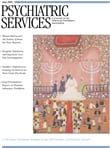Letter
"Faking Good" and "Faking Bad": Reply
In Reply: We thank Dr. Roskes for calling attention to a vexing problem that frequently arises in emergency rooms and on inpatient units regarding admission and discharge decisions. Most clinicians working in these settings encounter "fake-bad patients" who try to gain entry to the hospital or to stay longer as inpatients by uttering the magic words, "I am suicidal." These patients test the clinician's risk assessment acumen. Unless the clinician or other staff can perform a competent suicide risk assessment, the patient is often automatically admitted. For this situation one of us has used the analogy of an airplane pilot who is flying at night and in bad weather and must trust the plane's instruments or crash ( 1 ). So it is with clinicians, we must trust our suicide risk assessments or be left at the mercy of a dissembling patient.
1. Simon RI: Assessing and Managing Suicide Risk: Guidelines for Clinically Based Risk Management. Arlington, Va, American Psychiatric Publishing, 2004Google Scholar



